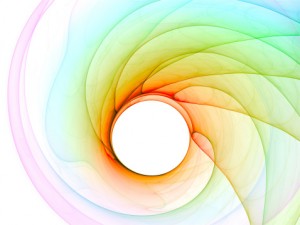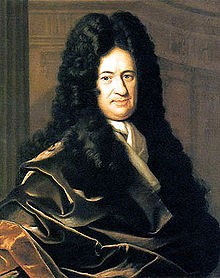Folds, Fractals and Holograms in Lurianic Kabbalah (Part 3)
By Asher Crispe: June 19, 2012: Category Inspirations, Networks of Meaning
 The newly expressed complexity in Lurianic Kabbalah does not mean that the opening up and unpacking of interincluded structures does not have its roots in earlier pre-Lurianic texts and Kabbalists. In fact, Bracha Sack in her study The Kabbalah of Rabbi Moshe Cordevero, confirms what other scholars have long contended–that principle concepts of Kabbalah such as the sefirot function in a interinclusive manner often represented by the analogy of a mirror.
The newly expressed complexity in Lurianic Kabbalah does not mean that the opening up and unpacking of interincluded structures does not have its roots in earlier pre-Lurianic texts and Kabbalists. In fact, Bracha Sack in her study The Kabbalah of Rabbi Moshe Cordevero, confirms what other scholars have long contended–that principle concepts of Kabbalah such as the sefirot function in a interinclusive manner often represented by the analogy of a mirror.
If each of the ten sefirot mirrors all the others, then we have a mirror reflecting a mirror reflecting a mirror. This will generate a potentially infinite series of reflections inflected one within the next. As she observes that:
In Kabbalah, the sefirot can be understood as mirrors reflecting one within the other. This principle of mirrored reflection can already be found in the kabbalistic teachings of R’ Yitzchak Sagi-Nahor (12th cent C.E.), R’ Erza (12th cent C.e.) and R’ Azriel (1160-1238) and they are also alluded to the Zohar and are brought out explicitly in Tikunei Zohar. (6)
הספירות נתפסות בקבלה כאספקלריות המשתקפות זו בזו.[…]עקרון ההשתקפות של הספירות כבר נמצא בתורות הקבלה של ר’ יצחק סגי נהור, ר’ עזרא ור’ עזריאל, רמוז בזוהר ומובא במפורש בתיקוני הזוהר
Sack, then goes on to quote an excellent proof-text for the establishment of an infinite series of interincluded dimensions to the seferiot from the pre-Lurianic kabbalist who nonetheless lived at the time of Lurianic influence–R’ Shlomo Alkabetz (1500-1580):
It is required to know the teaching of kabbalists that states: every one of the sefirot contains all of the ten (other sefirot) within it. Do not think that each part exists in and of itself with characteristics (qualities) separate from the others [there is always overlap in terms of the qualities (my insertion)]. One quality (sefirah) does not exist alone (in isolation) as something abstract and removed that negates the other qualities (sefirot). Rather, they are mutually interdependent with each part containing within itself all of the others, and in this manner [of interinclusion] they can reach limitless number [in terms of their subcategories]. (7)
וצריך שתדע כי מה שאמרו המקובלים כי כל אחת מהספירות כלולה מי’ אל תחשוב כי כל חלק וחלק הנמצא במדה אחת מן המדות האחרות הוא חלק מאותה מדה בלבד מופשט ומשולל מיתרהמדות חלילה, רק כל חלק וחלק כלול וכלול מכלם. וכן כל חלק מהחלקים הנזכרים כמו כן כלול מכלם. ובאופן זה יעלו לאין מספר
Consequent to the enfolding of one sefirah within the other, a base of two levels of interinclusion—“two which are four” a basic model in the Talmud—quickly expanded to 10 levels of interinclusion, then 100, then a 1000 and so one until infinity.
Thus, the abstract calculations of the mind far out run the experience grasped by the heart. To “practically” feel beyond the most basic levels of interinclusion is not possible in any ordinary sense. Our discernment of experiential textures can’t handle the complexity. We work with crude hands and large tweezers to capture the world of sensation. The hair splitting of the mind only makes sense if we zoom in on a detail of the total complex picture and journey through the finite set of relationships that lace that locus of the puzzle.
While the above quotation from R’ Shlomo Alkabetz may be as good as any of the pre-Lurianic statements on the matter, it only sets in relief the adventurousness of the Arizal’s teachings and his students writings as attempts to elaborate and navigate greater and greater complex systems of interpretation. Having out engineered the typical mindset, Lurianic Kabbalah, as evidenced in the above quotation from Etz Chaim, may have compromised its own efficiency, clouded its clarity and frayed the very threads by which the system was sewn.
Certainly for most, the descriptions of reality in Lurianic texts seem to be divorced from the perceptual world. Stripped of our senses, we’ve entered a strange quantum fog. To partake of it, we may require new equipment from latter generations of minds that can help us renegotiate the past. We will endeavor to offer several suggestions in the pages to come.
Traditional analysis of these structural models–be they of the soul and the unfolding of consciousness, an emanative scheme of four worlds, four elements, four strata of life from inanimate to human, or the four letters of the Divine name–comes to inform us in some manner about the Great Chain Being.
The four stages of interlocking links of this chain are most appropriately associated with the letters of the Tetragrammaton mentioned above in the quote from Etz Chaim, in that this name is traditionally understood to denote God as Being or Shem Havayah. (8) Moreover, every particular being mirrors that Great Chain of Being as a whole. An innumerable list of objects correspond to the letters of this name and therefore to the links of the Chain in kabbalistic texts through the ages. Yet, this structure (albeit with variations) crops up in a wide variety of philosophic and cultural contexts outside of a Judaic framework.
One of the most highly regarded studies devoted to this topic is Arthur Lovejoy’s celebrated work the Great Chain of Being. There he points to Aristotle (amongst others) as one of the intellectual foundations for the tradition(s) of this model. (9) Highlighting the functional characteristics of this model, Lovejoy remarks that:
In the De Anima another hierarchical arrangement of all organisms is suggested, which was destined to a greater influence upon subsequent philosophy and natural history. It is based on the “powers of the soul” possessed by them, from the nutritive, to which plants are limited to the rational characteristics of man “and possibly another kind superior to his,” each higher order possessing all the powers of those below it in the scale, and an additional differentiating one of its own. (10)
The model as it was classically conceived here represented a static hierarchy with each respective entity installed in the system according to its qualifications. Gradations of life then became the primary content of the world as Lovejoy suggests riding the words of Plotinus:
Thus ‘the world is a sort of Life stretched out to an immense span, in which each of the parts has its own place in the series, all of them different and yet the whole continuous, and that which precedes never wholly absorbed in that which comes after.’ (11)
 Thus, we achieve the continuity amongst the diverse. The vertical dimension does not collapse into the horizontal. It retains height. Marks of distinction that individuate nonetheless remain pliable so as to allow transition. Bridges are specifically built over borders.
Thus, we achieve the continuity amongst the diverse. The vertical dimension does not collapse into the horizontal. It retains height. Marks of distinction that individuate nonetheless remain pliable so as to allow transition. Bridges are specifically built over borders.
Moving in the other direction of history, Lovejoy sends us to Leibniz as the prime example of thinking the Chain within later philosophic systems. As he sets up the style of his adoption of these ideas, we can already begin to suspect the shadow of kabbalistic influence lurking in proximity to Leibniz (1646-1716) as we will hopefully confirm:
Among the great philosophic systems of the seventeenth century, it is that of Leibniz that the concept of the Chain of Being is most conspicuous, most determinative, and most pervasive. The essential characteristics of the universe are for him plenitude, continuity, and linear gradation. The chain consists of the totality of monads, ranging in hierarchical sequence from God to the lowest grade of sentient life, no two alike, but each differing from those just below and just above it in the scale of least possible difference. Since the metaphysics of Leibniz in a form of idealism, or more precisely, of pan-psychism, the gradation is defined primarily in psychological rather than morphological terms; its is by the levels of consciousness which severally characterize them, the degrees of adequacy and clarity with which they “mirror” or “represent” the rest of the universe, that monads are differentiated. (12)
My contention is that the primary understanding of this scale is in fact psychological, that is, a factor of consciousness. I do not think that it is limited to a mere form of consciousness only for Leibniz but for R’ Chaim Vital as well. Is this not the adumbration of the earlier arguments about the seferiotic relationships and their mirroring tendencies recast as monads in this younger incarnation?
Stressing the sense of interinclusion that sustains identity and difference, Lovejoy continues his ruminations on Leibniz:
Every monad mirrors the world from its own unique point of view and therefore in its own unique way, and it is by this means that the fullness of diversity which constitutes the perfection of the universe is attained: ‘the glory of God is multiplied by so many wholly different representations of his world.’ (13)
While this may suffice to survey the property lines of a timeless presence, it is not until the effects of temporality are considered that we become free in any significant way from the static nature of this model. Introducing the temporal element that invited ideas of evolution and revolution, Lovejoy contends that:
…by the late eighteenth century, we must also recall, the cosmical order was coming to be conceived not as an infinite static diversity, but as a process of increasing diversification. The Chain of Being having been temporalized, the God whose attributes it disclosed had been declared by not a few great writers to be one who manifests himself through change and becoming; nature’s tendency was to the production of new kinds; and the destiny of the individual was to mount through all the spires of form, in a continual self-transcendence. (14)
While the temporal flux in the Lurianic system is at best ambiguous, there are those who subsequently strove to interpret the Lurianic base of teachings as a process of becoming through time. This has overtones for the Kabbalah of the Ramchal (R’ Moshe Chaim Luzatto 1707-1746) as well as the Gaon from Vilna (1720-1797). Their brand of Ashkenazic Kabbalah focused in on temporal elements, the process of becoming rather than states of being.
In particular, this stream of Kabbalah has reinterpreted the Lurianic scheme in terms of the unfolding of history. Of focus were the hanhagot or the management factors by which the forces of history emerged and materialized from the spiritual plane onto the surface of concrete historical events. This kind of synchronic comparison would likely prove a fascinating subject worthy of an inquiry in its own right. Following in a similar fashion, Lovejoy outlines the spin that Lorenz Oken places on these issues:
The realization (Realwerden) of God, then, takes place only gradually, through the history of the cosmos. Its primary manifestation and universal condition is time. “Time is nothing but the Absolute itself.” “The Absolute is not in time, nor before time, but is time.” Again, “time is simply the active thinking of God.” It is “the universal that includes all particulars, hence all particular things are in time, and created Time and creation are one.” This temporal Realwerdung of the Absolute reaches its highest point in man, a being capable of self-consciousness. “Man is the creation in which God fully becomes an object to himself. Man is God represented by God. God is man representing God in self-consciousness…Man is God wholly manifested, der ganz erschienene Gott.” (15)
God is time. In Hebrew the essential name for God which we mention before is read as “Being” also expresses time with it etymological inflections of haya, hoveh, v’yihiyeh [היה, הוה, יהיה] denoting past, present and future of our term for Being. This rewritten formula strikes a chord at the heart of Heideggerian imagination: God [or more precisely the essential Divine name or mode of revelation] is ‘Being as Time’ and we, Dasein, the human, are ourselves time. (16) The bond between the human and the Divine would appear to be time itself. To be time—is this not an echo?
Another noteworthy treatment of our Chain (from a traditionalist’s vantage point) is delivered by E.F. Schumacher in his book length dissection of these concepts entitled A Guide for the Perplexed. This Guide, unlike Maimonides’, applies single-minded attention to flushing out every detail of the famous four levels of Being (fourfold ontology) with painstaking clarity. As an introduction to this phenomenon, complete with a translation into the language of modernity, Schumacher’s text is a work of distinction. While his work is also worthy of an essay in its own right, let us select one or two examples of his commentary. For instance:
The ancient view begins with the Divine and sees the downward Chain of Being as moving an ever-increasing distance from the Center, with a progressive loss of qualities. The modern view, largely influenced by the doctrine of evolution, tends to start with inanimate matter and to consider man the last link in the chain, as having evolved the widest range of useful qualities. (17)
 Certainly this frames the problem evolution/devolution depending on perspective. In the continuation of the long quote from Etz Chaim above, R’ Chaim Vital writes about the monkey as the intermediary between the animal and the human. We might apply Schumacher’s top-down or bottom-up distinction to address the possible meanings of that statement.
Certainly this frames the problem evolution/devolution depending on perspective. In the continuation of the long quote from Etz Chaim above, R’ Chaim Vital writes about the monkey as the intermediary between the animal and the human. We might apply Schumacher’s top-down or bottom-up distinction to address the possible meanings of that statement.
Moreover, the fact that there are always intermediaries at every level of Being (as with R’ Chaim Vital’s placing of a courtyard between the level of the house and the field) comes to inform us that the more general transitions and continuities are masking the phenomenon that Schumacher cites as “…an ontological discontinuity or, more simply a jump in the Level of Being.” (18) Does the jump imply proximity and infinite distance, self-similarity and strangeness?
(7) The Kabbalah Of Rabbi Moshe Cordevero p.206 (also see footnote 8).
(8) Quotes by Sack p.206, originally from Brit ha-Levi. Lemberg, 1863, 41a.
(9) The Great Chain of Being pp.58-59. See also De Anima (On the Soul) of Aristotle 414a-415a.
(10) “In addition to a variety of interpretations provided by the biblical continua, new forms were adopted, some of which were related to Lovejoy’s famous Great Chain of Being theory. Four main new continues in Judaism can be identified: the Neo-Aristotelian, Neo-Platonic, Sefirotic and the linguistic.” See Moshe Idel, Enchanted Chains: Techniques and Rituals in Jewish Mysticism.” p.42
(11) Ibid. p.63. Quoting the Enneads. V, 2, 1-2.
(12) Ibid. p.144.
(13) Ibid. p.294. See also Leibniz’s Discourse on Metaphysics, IX.
(14) Ibid. p.296.
(15) Ibid. pp.320-321. He Lovejoy quotes Oken’s Lehrbuch der Naturphilosophie, I,4 and 22, 26.
(16) Stated most frankly in his essay “The Concept of Time” Heidgger summarizes his argument that “time is Dasein” or alternatively “Dasein is not time, but temporality.” See p.20. Could we not boldly suggest that time as the Absolute or God contrast with temporality to be played by Dasein? The threeway mapping of Oken’s position (and latter Schelling’s “theological evolutionism” [see Lovejoy p.322]) with Heidegger’s and the Kabbalist’s model may prove to intersect in all sorts of other fruitful ways that can’t be entertained here.
(17) Guide. P.16.























;)
;)
;)
;)
;)
;)
;)
;)
;)
;)

